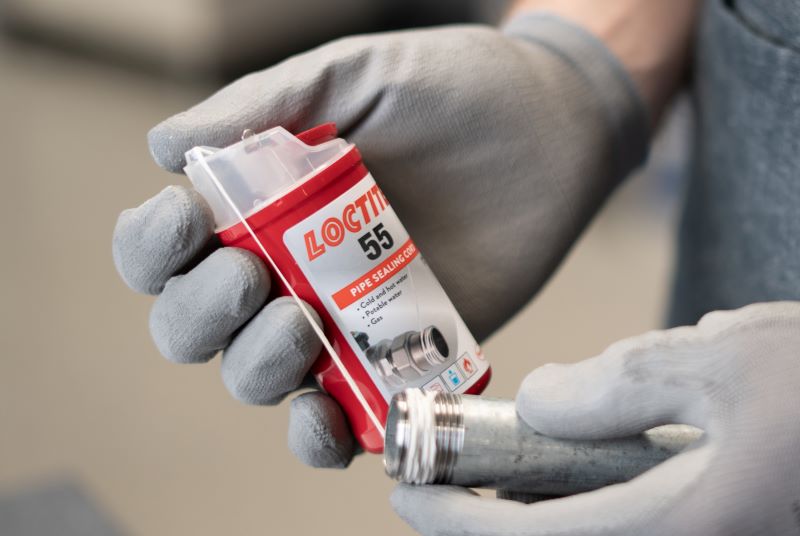
Already widely used and trusted by professional installers for pipe sealing, LOCTITE® 55 is now available in a new dispenser.
The new pack – made with 70% recycled plastic – features several improvements which the company says will make applying the sealing cord easier and more convenient for users. An integrated lid prevents the cap from falling off or becoming lost, the sealant cord is dispensed with a new pre-tension to aid application and the top of the dispenser is now transparent so users can see how much product is left.
While the packaging has undergone a revamp other reliable features remain, for example it retains the integrated cord cutter.
Designed to replace PTFE tape, LOCTITE 55 is designed for the sealing of threaded metal and plastic pipes and fittings. It needs no cure time or special training and results in an immediate, full pressure seal. Simply wind onto the thread, apply with tension and then cut the cord using the integrated cutter.
The company says that as LOCTITE 55 does not shred, pipe joints can be readjusted to align pipe work, fittings and gauges, without fear of leakage, giving installers greater flexibility on installation and saves time for cleaning and resealing.
It is certified for gas and potable water applications. The product’s latest certification is to GASTEC QA Approval Requirements 214, enabling its use with hydrogen gas application. This complements existing NSF/ANSI, Standard 61, DVGW/KTW and WRAS approvals.
“Customers love LOCTITE 55, but there is always room for improvement,” said Celine Blais, Senior Innovation Project Manager. “Two criticisms were that the lid was easy to lose, and that it was hard to see how much product was left”.
“While re-engineering the pack, we’ve also switched the dispenser materials to include 70% post-consumer recycled plastic, following Henkel sustainability strategy in offering products that enable emission reduction and circularity.”











